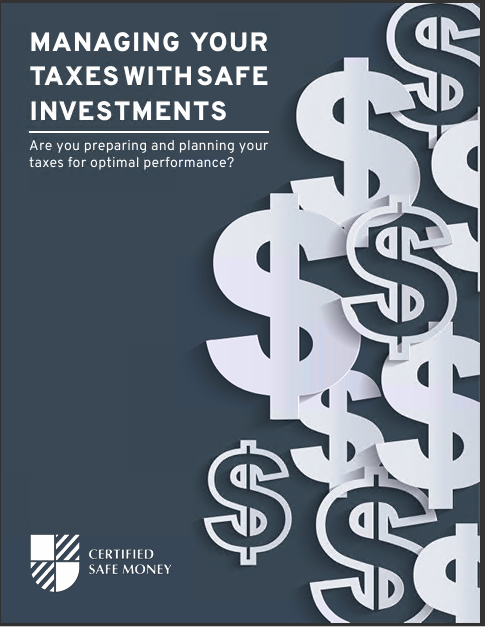Key Takeaways:
- Various types of annuities offer unique tax advantages that can influence your overall tax planning strategy.
- Selecting the appropriate annuity type can enhance your tax efficiency and boost retirement income.
Annuities and Taxes: Choosing the Most Beneficial Type
Making informed decisions about annuities can significantly affect your retirement plan, especially regarding taxes. Different annuity types offer unique tax advantages that can help you maximize your savings and ensure a steady income stream. This guide will delve into the tax implications of various annuities and offer advice on selecting the most advantageous one for your financial situation.
Exploring Annuities and Their Tax Advantages
Annuities are financial products designed to provide a consistent income, particularly useful during retirement. These products, offered by insurance companies, come in several varieties, each with specific tax benefits. The main types include fixed, variable, and indexed annuities, which can be further classified into immediate and deferred annuities.
Fixed Annuities
Fixed annuities guarantee a specific interest rate and steady payments. One of their main tax advantages is the tax-deferred growth of earnings. This means you do not pay taxes on the interest earned until you start receiving payments, allowing your investment to grow more efficiently over time.
Immediate Fixed Annuities
These annuities start payments soon after your investment. The payment you receive is divided into principal (which is not taxed) and interest (which is taxed as ordinary income).
Deferred Fixed Annuities
With deferred fixed annuities, your money grows for a set period before you begin receiving payments. The interest grows tax-deferred, and you only pay taxes on it when you withdraw, which can be beneficial if you expect to be in a lower tax bracket in retirement.
Variable Annuities
Variable annuities allow investments in a variety of sub-accounts, similar to mutual funds. Like fixed annuities, the earnings grow tax-deferred until withdrawal. This can lead to significant growth if the investments perform well.
Immediate Variable Annuities
Payments from immediate variable annuities start shortly after the initial investment and are based on the performance of the chosen sub-accounts. Earnings are taxed as ordinary income.
Deferred Variable Annuities
These annuities allow your investment to grow over time, with taxes deferred until you begin withdrawals. The potential for growth is higher but comes with increased risk due to market fluctuations.
Indexed Annuities
Indexed annuities combine features of fixed and variable annuities. They offer a minimum guaranteed interest rate along with additional earnings linked to a market index. Earnings grow tax-deferred until withdrawal, providing a balance of growth potential and protection.
Immediate Indexed Annuities
Payments start soon after investment, with returns tied to a market index. Interest earned is taxed as ordinary income, while the principal portion remains untaxed.
Deferred Indexed Annuities
These annuities allow your investment to grow based on index performance, with the added benefit of tax deferral on earnings. They typically offer a minimum guaranteed interest rate, adding a layer of security against market downturns.
How to Select the Most Beneficial Annuity Type
Choosing the right annuity requires careful consideration of your financial goals, risk tolerance, and tax circumstances. Below are some key factors to consider when selecting an annuity.
Determine Your Financial Goals
Your financial objectives will heavily influence your choice of annuity. If you prioritize stable, predictable income, a fixed annuity might be the best fit. For those seeking higher growth potential and willing to accept market risks, variable or indexed annuities could be more suitable.
Assess Your Risk Tolerance
Annuities vary in risk levels. Fixed annuities offer low risk with guaranteed payments, while variable annuities carry higher risk due to market exposure. Indexed annuities strike a balance, providing some growth potential with downside protection. Assess your comfort level with risk to choose an appropriate annuity type.
Analyze Your Tax Situation
Tax considerations are crucial when selecting an annuity. Understand your current tax bracket and anticipate changes in retirement. Deferred annuities can be particularly beneficial if you expect to be in a lower tax bracket when you begin withdrawals. The tax-deferred growth feature of annuities also allows for compounding without annual tax burdens, potentially enhancing returns.
Compare Fees and Expenses
Annuities often come with various fees, including administrative, mortality, and investment management charges. These costs can impact your overall returns, especially with variable annuities. Compare the fees associated with different annuities to find the most cost-effective option.
Seek Professional Advice
Consulting a financial advisor can provide valuable insights and personalized recommendations. An advisor can help you navigate the complexities of annuities, assess your financial situation, and choose the most beneficial annuity type for your needs.
Consider Early Withdrawal Penalties
Be aware of the penalties associated with early withdrawals from annuities. Withdrawing funds before age 59½ can result in a 10% penalty in addition to regular income taxes on the earnings. Plan your withdrawals carefully to avoid unnecessary penalties and preserve your investment.
Evaluate Payout Options
Annuities offer various payout options, including lifetime income, period-certain payments, and lump-sum distributions. Lifetime income provides a steady stream for your lifetime, while period-certain guarantees income for a set period. Lump-sum payments provide immediate access to the entire annuity value. Each option has different tax implications, so choose one that aligns with your financial needs and tax strategy.
Strategies to Maximize Tax Benefits with Annuities
To fully leverage the tax advantages of annuities, consider these strategies:
Implement Annuity Laddering
Annuity laddering involves purchasing multiple annuities with different maturity dates. This approach spreads out income over time, potentially keeping you in a lower tax bracket and providing flexibility in accessing funds.
Utilize Roth IRA Annuities
Roth IRA annuities offer tax-free growth and withdrawals, provided certain conditions are met. Funding an annuity with Roth IRA contributions allows you to enjoy tax-deferred growth and tax-free income in retirement, which is beneficial if you expect higher future tax rates.
Engage in Charitable Giving
Charitable gift annuities allow you to support a charity while receiving income and tax benefits. Contributions may qualify for a partial tax deduction, and part of the annuity payments might be tax-free.
Plan Withdrawals Strategically
Coordinate your annuity withdrawals to manage tax liability effectively. Consider timing withdrawals to years when you expect a lower tax bracket and spreading withdrawals over multiple years to avoid large tax bills.
Securing Your Retirement with the Right Annuity
Selecting the most beneficial annuity type involves understanding your financial goals, risk tolerance, and tax situation. Fixed, variable, and indexed annuities each offer distinct tax benefits that can enhance your retirement income and financial stability. By evaluating your needs, comparing costs, and consulting a financial advisor, you can make informed decisions that optimize your tax savings and ensure a secure retirement.•••••••










